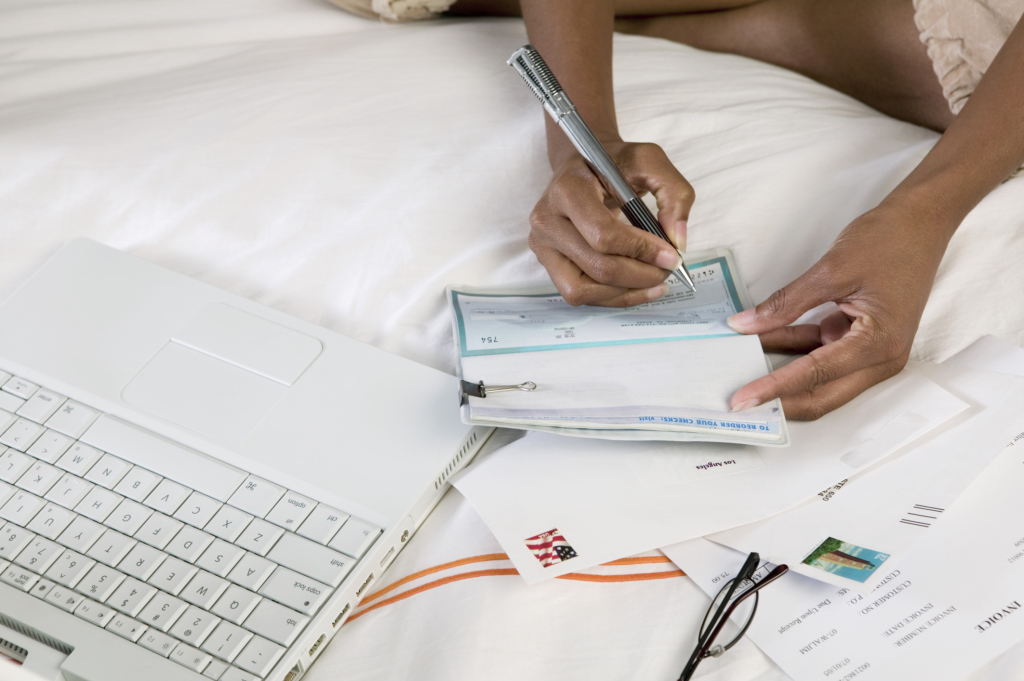Trust Babbitt & Dahlberg to help guide you to financial independence
Bank accounts, bills, check books.
It’s not uncommon for one partner in a marriage to be “in charge” of managing all of the household finances. But that often means the other partner may find himself or herself in unfamiliar territory when faced with a divorce. New responsibilities like opening a bank account, balancing a checkbook and creating a budget may seem daunting when your marriage is ending, but getting a handle on these issues calmly and quickly is one of the best ways to reclaim your financial independence.
Opening a bank account
If you don’t have your own individual account, you probably will need one at some point. Jointly-titled accounts that are used to pay bills are fine, but any money in such accounts may be accessible by both parties.
Setting up your own checking and savings can be a giant step toward independence. While on the surface the process can be intimidating, it’s often as simple as answering a few questions at your local bank branch. But first, follow these guidelines:
- Do some research. Each bank will have different fees, hours and benefits. Check out their websites and find one that works best for you and your finances.
- Figure out how you’ll be using your bank. For instance, if you’ll be doing more of your banking online, you might not have to worry about where the bank is located. However, if you plan on visiting your bank in person to drop off checks or cash, you’ll probably want to choose a bank that has branches near you.
- Most banks will ask you for a few different forms of identification before they can open an account for you, so be sure to bring your driver’s license, social security card, and proof of residence, such as a utility bill or lease agreement. You should also bring a check or some cash in case your new bank account has any minimum deposit requirements.

Balancing your checkbook
A divorce often means taking on a slew of new responsibilities you’ve never had to face before. If you’re unfamiliar with balancing a checkbook, it’s simply keeping a record of how much you have in your account and how much you’re spending.
Just follow these steps:
- Keep a record for every time you make a withdrawal, make a deposit or spend money by writing a check or paying with a debit card that draws from your checking account.
- Regularly check your bank statement. You’ll probably get one in the mail every now and then, but keep in mind the information on it will be a day or two out of date. If possible, set up online banking so you can check your account balance in real time online. You can also use computer software like Quicken to manage all of your financial information.
- Figure out what your last transaction was and use this as your starting point to balance your checking account. Check your account total at this last transaction and compare it to the total you’ve kept in your records. If the numbers match up, your account is already balanced.
- Checks can take some time to clear, both after writing them and after depositing them. Keep this in mind when viewing your account balance.
- If the amount in your bank account doesn’t match up with the amount you’ve added up, subtract the two numbers and try to determine the source of the difference. Make sure you’ve accounted for checks that may have not cleared yet. Then, check your bank statement for any unexpected transactions like overdrafts, ATM fees or any bills that auto-debit from your account. Once you find the source of the discrepancy, compare the numbers again to see if they match. If they don’t, it may just be a simple addition error. Keep at it until both numbers match up perfectly.
Creating a budget
One of the most important steps you can take toward financial stability is setting a budget. This will ensure that you can cover all of your necessary expenses and give you an idea of how much money you have each month to spend beyond your basic needs.
- Collect all of your utility bills, rent or mortgage statements, car payments, and any other regular monthly expenses. Add them up so you know how much money you need to have set aside each month.
- Remember to account for things like food and gas that may vary from month to month. Look at your credit card statements or receipts to see if you can figure out how much, on average, you spend on these per month.
- If you need to estimate a few numbers, always overestimate. It’s better to have a little cash left over at the end of the month rather than ending up short.
- Don’t forget about your irregular expenses, like medical bills or clothes. Chances are you aren’t seeing a doctor every month, but it’s important to make sure that you’ve factored in some amount to cover those unexpected costs.
Call our Columbus divorce attorneys
If you’re considering the impact a divorce can have on your personal finances, call the experienced family law attorneys at Babbitt & Dahlberg. We can help you examine your options and make a plan for financial independence.
(Visited 303 time, 1 visit today)
Posted December 26, 2014 by Gus Dahlberg in Ohio divorce
